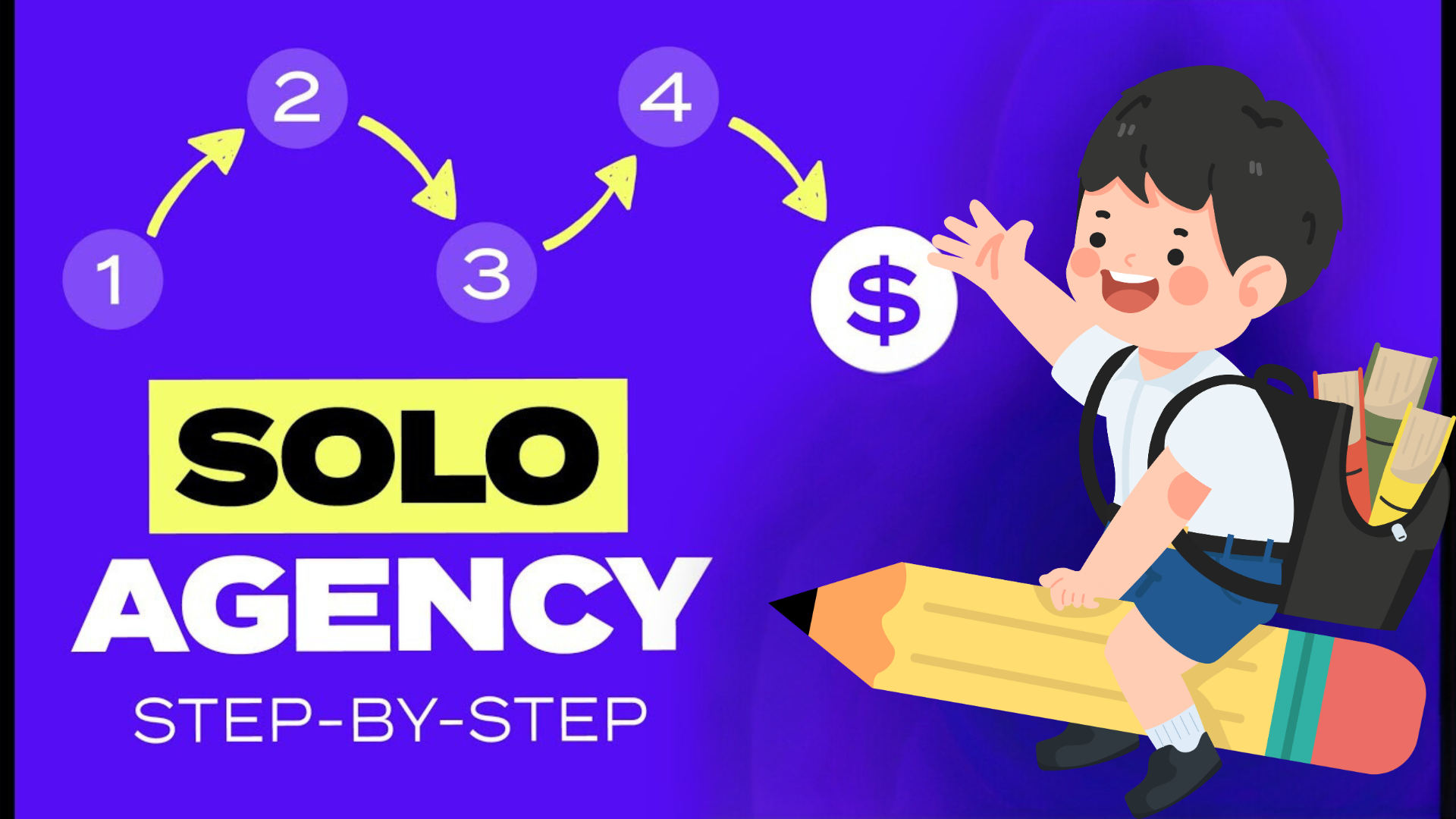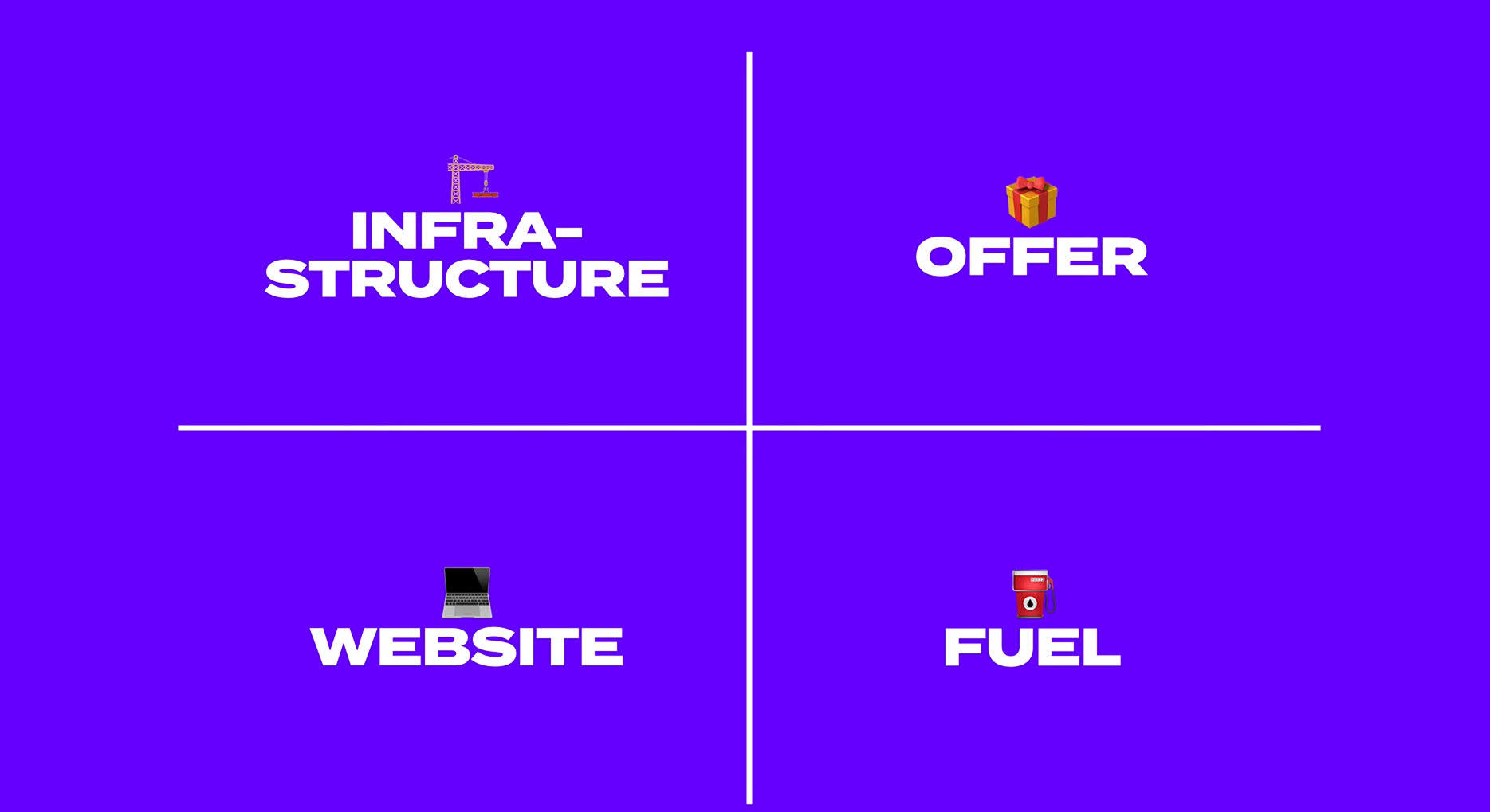
The Four Pillars of Starting a Solo Agency
Discover the four essential steps to start a solo agency. Learn about creating a unique offer, building an effective website, and the importance of sales and client acquisition.
Starting a solo agency can seem like a daunting task, but with the right steps, you can turn your agency into a revenue machine. Here are the first four steps to get you started:

1. Infrastructure
The infrastructure of your agency is crucial. What makes solo agencies unique are the moving parts and pieces. The only constant in your agency is you. However, you can’t do everything. Some roles and responsibilities need to be fulfilled to service your clients and scale your agency. These roles can be filled by yourself, a part-time contractor, or automation and tools. Some of the roles that need to be filled early on are:
Billing
You need someone or something to manage invoices, send them out, and ensure that your clients are paying on time. A tool like Hello Bonsai automates most of this process, allowing you to set it and forget it. Alternatively, you could hire a virtual assistant (VA) with basic knowledge of these types of tools to manage the billing department of your agency.
Support
For obvious reasons, you don’t want to manually respond to every single support request. A tool like HelpCrunch can create a library answering all the different questions that you frequently get. This way, when people have an issue or a question, they can first go to your library to find their answer. If they can’t, then they can reach out to you. You could also use canned responses inside of Gmail. These are email templates that allow you to quickly respond to common questions. For support, you could also hire a VA, which is affordable. Just make sure that you train them so they know how to answer every different type of request that they might get.
Fulfillment
Most of the time, you are going to be the one fulfilling the actual services, at least at first. But that doesn’t mean that you always have to be stuck in fulfillment. You can hire part-time contractors, use a white-label agency where you sell the services and they complete them or even use AI tools to shortcut this entire process. If you’re the only person managing fulfillment, it’s going to be difficult to grow your business because there are only a certain number of hours in a day that you can work.
2. Your Offer
The second step of starting your agency is creating your offer. You need to find a way to create such a great offer that people just can’t refuse it. First, you need to decide what it is that you’re selling. Is it design and development? Is it marketing like ads and SEO? Is it social media? Is it content? Whatever it is that you feel like you can do well and provide value to your clients, that needs to be your service. But remember, your service and your offer are two different things.
3. Sales
The fifth responsibility is sales. Early on in your agency, you must handle the sales yourself. A salesperson just isn’t going to know how to sell your unique services. As you learn how to effectively sell your services, you can eventually train a salesperson or a sales team.
4. Maintenance
The sixth responsibility is maintenance. This is just ongoing stuff that hopefully you’re charging some sort of recurring fee for. You could hire a virtual assistant, or a contractor, or use tools that can automate this maintenance process. For example, a tool like Sitee Keep offers monthly site maintenance to your clients and sends them an automated report with all of the audits and checks. Look for ways to maintain your clients, keep them happy, and provide value while doing the least amount of work possible.
Hiring an Executive Assistant
One last tip before we move into the next step is hiring an executive assistant. There’s a lot of value in hiring a specialist, but an executive assistant who does a little bit of everything can be a great asset. They can respond to emails, work with clients, help make big decisions on the business, and help with billing. If you’re having a hard time deciding who you should hire as a part-time or full-time person, maybe looking for somebody who has experience in all of the different things is a good place to start.
2. Your Offer (Continued)
You need to find a way to create such a great offer that people just can’t refuse it. First, you need to decide what it is that you’re selling. Is it design and development? Is it marketing like ads and SEO? Is it social media? Is it content? Whatever it is that you feel like you can do well and provide value to your clients, that needs to be your service. But remember, your service and your offer are two different things.
The service is what you’re doing, but the offer is how you sell it. You’re packaging it up and making it seem appealing to your prospects. If you just try to sell a service, you’re just going to be one in a million because that’s what everyone is doing. So instead, you need to find a way to package that up into a great offer. The way to do this is by making it unique. Here are several different ways to make your offer unique:
- Best: Maybe you’re the best designer out there and your work is better than anyone else’s. That’s a great way to make yourself stand out.
- Fastest: Maybe you have a faster turnaround than anybody else out there.
- Cheaper: Maybe you’re just a cheaper option and you do the same work for a cheaper price.
- Exclusive: Maybe you’re just exclusive and you find a way to build a brand that people just want to work with and then it makes them feel good about themselves.
- Niche: Maybe you’ve chosen such a specific niche that you’re the only person that can help your prospects. If you’re the only option, it’s an easy sale.
- Simplicity: Maybe you’ve just found a way to take something complex and make it seem super simple and attainable.
- Low Risk: Maybe your offer is that you are the lowest risk option or you have some sort of insane guarantee that if you don’t get results they don’t pay.
3. Your Website
The first thing you need to know is your website doesn’t have to be incredible. Don’t overdo it. There are just a few things that you need here that if you’ve got them in the right order, it’s easy to understand and consume for your prospects. Here are a few tips about your website:
- Clarity: Be clear about what it is that you do and why people should hire you.
- Call to Action: Have a strong call to action. Just having a button that says “Contact Us” is not a good call to action. Give them some way to book a call on your calendar or uniquely reach you.
- Personal Touch: Make your website personal. Don’t be afraid to put your face on the website because the more they see you, the more they’re going to trust you.
- Show Your Work: Make sure you show your work and even more importantly, show your results. If you give examples of all the different types of work you’ve done, it’s more likely that they’re going to find something that resonates with them and they’ll be more likely to want to hire you because they know that you can do what they need.
Obsess over getting proof that you are a person that they should hire. Whether that means running your campaigns or building practice websites, anything that you can do to build up your portfolio is going to be a massive benefit. If you’re a designer looking for a way to perfect your portfolio, consider joining a training that walks you through every step of writing a case study and making it compelling for your prospects.
4. Getting Clients
The fourth step, and perhaps the most crucial one, is getting clients or in other words, sales. As the agency owner, your number one priority is sales. You should not do anything else in your business before sales. Don’t get caught in fulfillment, don’t get caught responding to emails, don’t get caught tinkering with your website. You should wake up every morning and your number one thought should be, “How am I going to land clients today?”
There are numerous resources available on how to find clients, how to sell to them, and how to do a strategy call. It’s recommended that you go through every one of these resources because without sales, nothing else in your business matters.
This article only covers the first four steps of starting your solo agency. If you want the next steps, feel free to ask. Also, if you have any comments or questions about running your agency, feel free to ask and I will try to respond to every single one. Thanks so much for reading and catch you in the next part!

